Published in 2018 by Enslow Publishing, LLC.
101 W. 23rd Street, Suite 240, New York, NY 10011
Copyright 2018 by Robert Gardner
All rights reserved.
No part of this book may be reproduced by any means without the written permission of the publisher.
Library of Congress Cataloging-in-Publication Data
Names: Gardner, Robert, 1929- author.
Title: Experiments with electricity and magnetism / Robert Gardner.
Description: New York, NY : Enslow Publishing, 2018. | Series: Science whiz experiments | Audience: 5-8.
Identifiers: LCCN 2016057568| ISBN 9780766086784 (library bound ; alk. paper)
Subjects: LCSH: ElectricityExperimentsJuvenile literature. | MagnetismExperimentsJuvenile literature. | ScienceExperiments Juvenile literature.
Classification: LCC QC527.2 .G3827 2018| DDC 537.078dc23
LC record available at https://lccn.loc.gov/2016057568
Printed in the United States of America
To Our Readers: We have done our best to make sure all website addresses in this book were active and appropriate when we went to press. However, the author and the publisher have no control over and assume no liability for the material available on those websites or on any websites they may link to. Any comments or suggestions can be sent by e-mail to .
Illustrations by Joseph Hill
Photo Credits: Cover, p..
 Contents
Contents
Introduction
Chapter 1
The Science of Electricity
1.1 Static Electricity
1.2 More Static Electricity
1.3 Charge and Attraction
1.4 Electric Charge Detection
Chapter 2
The Science of Magnetism
2.1 Magnetic North
2.2 Magnets and Matter
2.3 Earths Magnetism
2.4 Building a Magnet
2.5 Dipping Magnet
2.6 Mapping Magnetic Fields
Chapter 3
Batteries, Circuits, and More
3.1 Build Electric Cells
3.2 Batteries and Electric Cells
3.3 Electric Circuits
3.4 More Electric Circuits
3.5 Parallel and Series Circuits
3.6 Fruit Cell
3.7 Light-Emitting Diodes
3.8 Circuits and Electrical Resistance
3.9 Meters and Electrical Resistance
3.10 Dimmer Switches
3.11 Short Circuit
3.12 Electric Plating
Chapter 4
Magnetism and Electricity
4.1 Ampres Rule
4.2 A Galvanometer to Measure Current
4.3 Magnetic Forces
4.4 Electric Currents and Magnets
4.5 The Power of Electromagnets
4.6 Is It a Conductor?
4.7 Magnetism and Temperature
Chapter 5
Electric Motors
5.1 Electric Motor Principle
5.2 Build a DC Motor
5.3 Electromagnetic Induction
5.4 Generating Electricity with a Motor
5.5 Electric Bills and Wattage
Answers to Questions
Appendix: Science Supply Companies
Glossary
Further Reading
Index
About the Author
Introduction
Most people in the world use electricity every day. Electricity supplies power our phones and computers, and they light up our homes at night. But what exactly is electricity? How does it work with magnetism to supply power to our world?
Electricity and magnetism are a part of physics, which deals with matter and energy. By doing the experiments in this book, you will find that electricity and magnetism are closely linked. Together they provide the energy we use every day. Without electricity and magnetism, our lives would be very different.
As you carry out the activities in this book, you may need a partner to help you. It would be best if you work with someone who enjoys experimenting as much as you do. In that way, you will both enjoy what you are doing. If any safety issues or dangers are involved in doing an experiment, they will be indicated. In some cases, to avoid danger, you will be asked to work with an adult. Please do so. We do not want you to take any chances that could lead to an injury.
Like any good scientist, you will find it useful to record your ideas, notes, data, and anything you can conclude from your investigations in a notebook. By doing so, you can keep track of the information you gather and the conclusions you reach. It will allow you to refer back to things you have done and help you in doing other projects in the future.
Entering a Science Fair
Some of the investigations in this book contain ideas you might use at a science fair. However, judges at science fairs do not reward projects or experiments that are simply copied from a book. For example, a diagram of the magnetic field around a bar magnet would not impress most judges. Finding a unique way to measure the magnetic force at different distances from a magnetic pole would be more likely to attract their attention.
Science fair judges tend to reward creative thought and imagination. It is difficult to be creative or imaginative unless you are really interested in your project. Choose an investigation that appeals to you. Before you jump into a project, you should consider your own talents and the cost of the materials you will need.
If you decide to use an experiment or idea found in this book for a science fair, find ways to modify or extend it. This should not be difficult because you will discover that as you carry out investigations, new ideas come to mind. Ideas will come to you that could make excellent science fair projects, particularly because the ideas are your own and are interesting to you.
If you decide to enter a science fair and have never done so, you should read some of the books listed in the Further Reading section. These books deal specifically with science fairs. They provide plenty of helpful hints and useful information that will help you to avoid the pitfalls that sometimes plague first-time entrants. You will learn how to prepare appealing reports that include charts and graphs, how to set up and display your work, how to present your project, and how to relate to judges and visitors.
Be Safe
Safety is essential when you do experiments. Your eyes require particular protection. They can be damaged by chemicals or flying fragments. The likelihood of an injury is very small because most of the projects included in this book are perfectly safe. However, read the following safety rules before you start any project.
1.Do any experiments or projects, whether from this book or of your own design, under the supervision of a science teacher or other knowledgeable adult.
2.Read all instructions carefully before doing a project. If you have questions, check with your supervisor before going any further.
3.Maintain a serious attitude while conducting experiments. Fooling around can be dangerous to you and to others.
4.Always wear safety goggles when doing experiments that could cause particles to enter your eyes.
5.Do not eat or drink while experimenting.
6.Have a first aid kit nearby while you are experimenting.
7.Never let water droplets come in contact with a hot light bulb.
8.Never experiment with household electricity. Instead, use batteries.
9.Use only alcohol-based thermometers. Older thermometers may contain mercury, which is a dangerous substance.
10.Always wear shoes, not sandals, while experimenting.
Keeping Notes
Your notebook, as any scientist will tell you, is a valuable possession. It should contain ideas you may have as you experiment, sketches you draw, calculations you make, and hypotheses you may suggest. It should include the data you record, such as voltages, currents, resistors, weights, and so on. It should also contain the results of your experiments, calculations, graphs you draw, and any conclusions you may be able to reach based on your results.

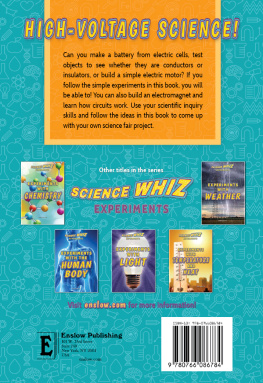

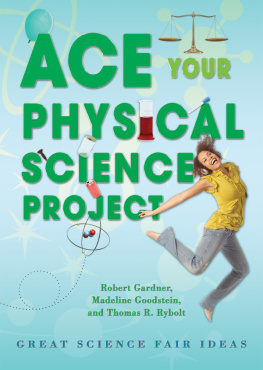


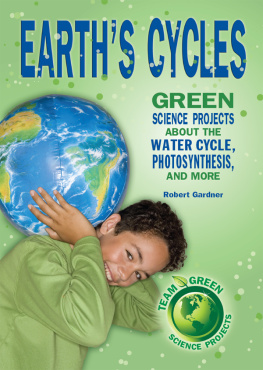
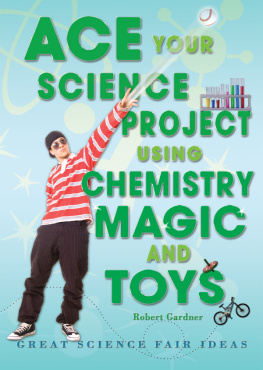
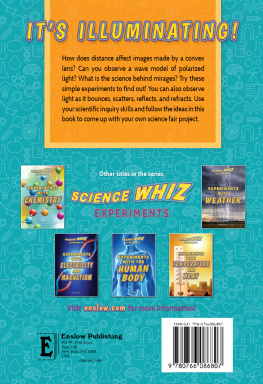


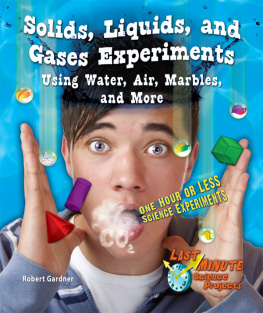
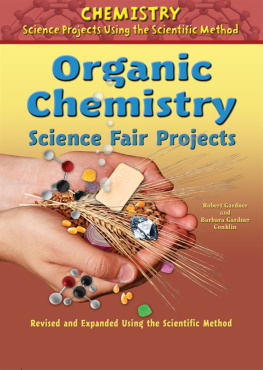

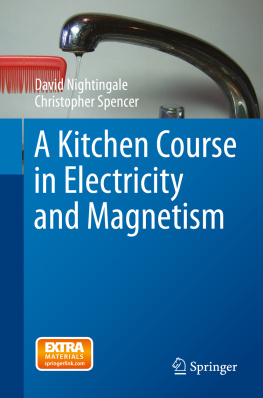
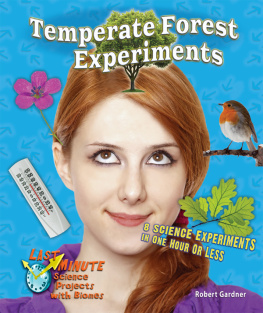

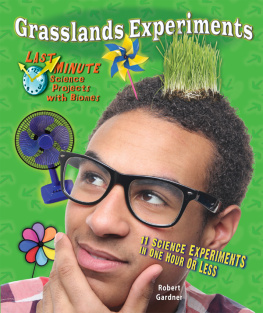


 Contents
Contents